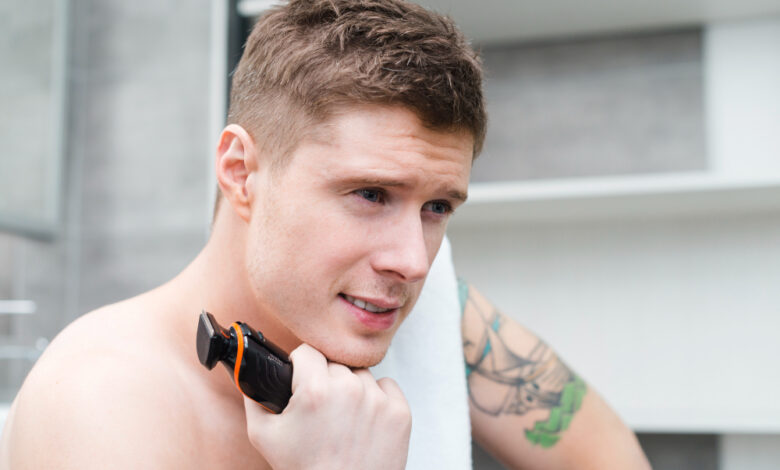How to Achieve the Perfect Low Taper Fade Haircut
How to Achieve the Perfect Low Taper Fade Haircut

Introduction:
The haircut low taper fade is one of the most stylish, versatile, and clean-cut haircuts that has gained immense popularity in recent years. Known for its subtle blend and sharp contour, the low taper fade is a go-to look for men seeking a polished appearance that still offers individuality and flair. This haircut gently tapers the hair from the top down toward the neckline and ears, giving a clean gradient that enhances the shape of the head without being too drastic or overly edgy. Whether you’re a businessman, a student, or someone who loves to stay ahead in the fashion game, the low taper fade suits nearly every face shape and hair texture. In this article, we’ll explore its style basics, variations, maintenance, and why it’s become a barbershop staple.
Understanding the Low Taper Fade: What Sets It Apart
The low taper fade starts just above the ears and neckline, offering a subtle transition that’s less dramatic than high or mid fades. Unlike more aggressive fades that begin higher on the sides, the low taper fade keeps the fade line lower, resulting in a more conservative yet modern look. This makes it ideal for individuals who want a neat, refined haircut that’s still trendy. It seamlessly blends into most hairstyles on top—whether curly, wavy, textured, or straight—and creates a natural contour that frames the face. This adaptability has made it an increasingly popular choice across a wide range of age groups and professions.
Why the Low Taper Fade Is So Popular
What makes the low taper fade stand out is its clean and subtle finish that doesn’t require a drastic change but still brings a fresh feel to one’s overall appearance. It provides structure without being overbearing and complements both casual and professional styles. Men love it because it minimizes bulk around the ears and neck, which not only looks clean but also feels more comfortable. It’s also popular due to its compatibility with facial hair, allowing for clean sideburn fades or a smooth transition into a beard. This universal appeal and versatility make it a favorite not just among clients, but also among barbers who enjoy working with its precision-focused style.
Best Hair Types and Face Shapes for a Low Taper Fade
One of the strongest features of the low taper fade is how well it suits nearly all hair types—whether thick, fine, curly, or straight. It works exceptionally well for men with wavy or curly hair, as it helps manage volume while still allowing the curls to show prominently on top. For those with straight hair, it provides a sleek, sharp outline that enhances any style on top. Face shape also plays a role—oval and square face shapes benefit greatly from the contouring effect of the fade, which adds structure and sharpness. Rounder faces can also benefit by pairing the low taper fade with more volume on top to elongate the face visually.
Popular Low Taper Fade Variations
The beauty of the low taper fade lies in its flexibility. It pairs well with several top styles like the textured crop, pompadour, comb-over, or even natural curls. For those who want to keep things classic, a low taper fade with a side part offers a timeless, gentlemanly vibe. If you’re aiming for a modern urban style, combining it with dreadlocks or a curly top provides a bolder, fashion-forward statement. Some choose to incorporate a design element—like a razor part or line-up—to add more edge and uniqueness to the look. This means whether you’re keeping it conservative or going trendy, the low taper fade can match your personal aesthetic.
How to Maintain a Low Taper Fade
To keep a low taper fade looking sharp, regular maintenance is key. While the fade itself grows out subtly compared to higher fades, it’s still important to visit the barber every two to three weeks to keep the gradient clean and consistent. In between cuts, maintaining the top style with the right hair products—such as matte pomades, styling creams, or curl definers—will help the haircut stay fresh. Regular shampooing and conditioning, especially for curly or textured hair, ensures the hair remains healthy and manageable. Additionally, keeping the neckline and edges trimmed between barber visits can help extend the crispness of the look.
Barber Tips for Getting the Perfect Low Taper Fade
When visiting a barber, communication is essential. Make sure to specify where you want the haircut low taper fade to begin, how short you want the sides, and what style you’re going for on top. Bringing a reference photo can help your barber visualize your ideal outcome more clearly. A good barber will understand how to blend the fade gradually, without any harsh lines, and shape it to enhance your natural head shape and hair growth pattern. Skilled barbers also know how to taper seamlessly into a beard if you’re sporting one, creating a balanced and cohesive appearance.
Conclusion:
The low taper fade is more than just a haircut—it’s a style statement that exudes confidence, class, and individuality. Its ability to blend subtly, suit various styles, and enhance facial features has made it a favorite in modern grooming. Whether you’re stepping into a corporate boardroom or hanging out on a weekend, this fade keeps you looking fresh, stylish, and put-together without trying too hard. With proper maintenance and a trusted barber, the low taper fade will continue to be one of the best grooming choices for men looking to elevate their personal style.



